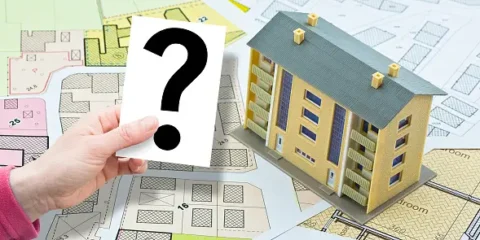Cost control is an essential part of construction projects, and it is essential to ensure that one estimates costs accurately. Bidding low can prove catastrophic if one is forced to pay much more than they quoted, especially if they underbid. On the other hand, overestimating minimizes the chances of being awarded the bid contract This is because overestimating makes the bid price go high. That is why contractors and estimators have to be very careful and produce accurate estimates of costs that will be incurred before placing a bid. Inspection of the given site is one of the most crucial steps while making an estimate.
Understand Additional Facts about the Place Where the Project Is to Be Implemented
The surveys enable the Construction Estimator to make a physical evaluation of the area and environs where the structure is to be constructed. In my opinion, the only way to get the details you lack is if you have to visit the site physically to come up with a certain estimate. For instance, access, transportation, storage space, other structures/establishments, and land topography may define costs. Verbal accounts from architects and owners of the buildings can hardly provide information as comprehensive as what one can witness and record during a site visit.
Some key things estimators need to assess during site inspections include:
- Access points, including a reception area and areas that can accommodate deliveries and equipment.
- Soil conditions
Some of the challenges that may arise when it comes to excavation or foundations include
- Underground utilities
- Environmental factors
- Concerning options, we have the amount of available workspace and staging areas.
- Availability of power and water supply systems
- Areas of exclusion for demolition or repairs
- The risk from dangerous substances
This information provides a foundation for the CAD Drafting Services estimator to be capable of producing a detailed quantity and costing for all materials, equipment, and labors as well as a credible bottom-line estimate. They left too many unknowns behind, which can change the appearance of the drawing or the scope of the work dramatically.
Document Details Regarding The Construction Of a Building
Apart from providing a visual observation of site conditions, the estimators have to ensure accuracy in documentation details. This encompasses making photographs of the site and the surrounding environment – overlaying annotations to the drawings denoting entry points, setup areas, distances, dimensions, and so on.
Employing laser measuring gadgets, estimators must record the dimensions of the site and any structure that will be relevant to the job. Any structure planned for demolition, renovation, or inclusion in new construction must be accurately surveyed. All these numbers are used directly in the quantity takeoff during the phase of estimation.
In addition to that, the estimator also has to write down notes on the general environment of the site, problems of access, space, electricity/water availability, or any other factors that may lead to added costs. This information complements the photos and measurements taken during the visit to the Maccarone quarry.
These documented details assist the estimators in establishing a measure of materials, establishment of requirements necessary for equipment, and measurement of space required for staging and many other aspects. This information cannot be otherwise obtained without going to the physical location of Christie’s.
Help Inform Estimating Assumptions
It should be remembered that even the most precise MEP Cost Estimator might have to assume certain conditions during this stage because it is almost certain that certain conditions might be unknown no matter the location of the project site. But site inspections enable you to assume less frequently and more knowledgeably as compared with guessing what it may be like based only on assumptions.
For instance, photos and soil samples may suggest the presence of subsoil rock in some of the areas of the site. Therefore, costing of blasting, excavation, and disposing of rock is made possible in the estimate – unlike the disgusted feeling that results from realizing that it is time to blast, excavate, and dispose of rocks.
Or estimators could come to know that demolition and dust control is a little more complex if the place adjoins other structures and establishments than if it is a stand-alone lot. The level of challenge of a particular task has a direct correlation with cost, number of people to be employed, and hire of equipment. Site visits ensure that estimators get a feel of the ground so that they have to make realistic assumptions.
Acts As a Precondition For Signing The Contractor
From a risk management standpoint, performing site inspections demonstrates the contractor’s due diligence by:
- Ensuring that no pre-existing damage on proximate structures is apparent before construction work commences. It can be photographing and documenting any cracks, uneven surfaces, etc As for the protection of the contractor, in case of further controversies as to the cause of the defects.
- Many utilities like water, electricity, and other underground cables exist; coordinating to prevent them from being damaged by crews is always advisable. Possibly, they can save a lot of costs, employee injury risks, and even possible lawsuits.
- Identifying hazardous substances such as asbestos and lead-based paints as well as evaluating the efficiency of abatement plans and barriers. Once more ensuring that risks are minimized to crews and project time constraints only.
- Identifying any accessibility challenges at an early stage means that contractors can contact property owners before commencing the movement of equipment and workers to the site. Preventing costly stand-downs.
The site assessment also increases confidence in the contractor and the effort they have put in to understand the project in its entirety and the site characteristics affecting the work. It is best practice to do site visits because it is certainly more accurate and you also minimize your risk as much as possible.
Modifications Of the Estimates
Last, of all, estimators need to be aware of the fact that no amount of site inspection is going to permit one to identify all the conditions that may have an impact on costs. This is why they need to stay engaged once construction commences – observing how actual conditions match up with estimations made during reconstruction.
For instance, other structural problems may be seen during the demolition process, utilities, and other conditions that were invisible earlier. Such items that are uncovered during a project like contaminated soil also pose other additional costs as well. Whenever such discoveries are made estimators make changes in quantity and price to meet the budget with real cost.
Thus, estimators understand how closely each assumption matches the actual conditions at the job site and continue fine-tuning estimates even more – providing the highest precision once a project is completed. Continual involvement keeps forecasted numbers relevant in the ongoing comparison of costs and guiding construction decisions.
Conclusion
To be able to lift the restrictions on movement, plan multiple site visits at different phases of the project.
Therefore, the entire site visitation process is a direct enabler that helps construction estimators establish material measurement with precision and the modeling of production rates and consequently the precise estimate costs. It is avoided because conditions of authenticity are incorporated in the estimating process beginning with the planning stage. Ideally, estimators should build more than one visit to the site before proposal submissions and at different stages of projects. According to research, initial and continuous valuations are the only accurate means of obtaining accurate estimations with construction. Estimators understand that no amount of paperwork or hearsay of what may have been done or observed can substitute for the actual visit and observation of the scene.





